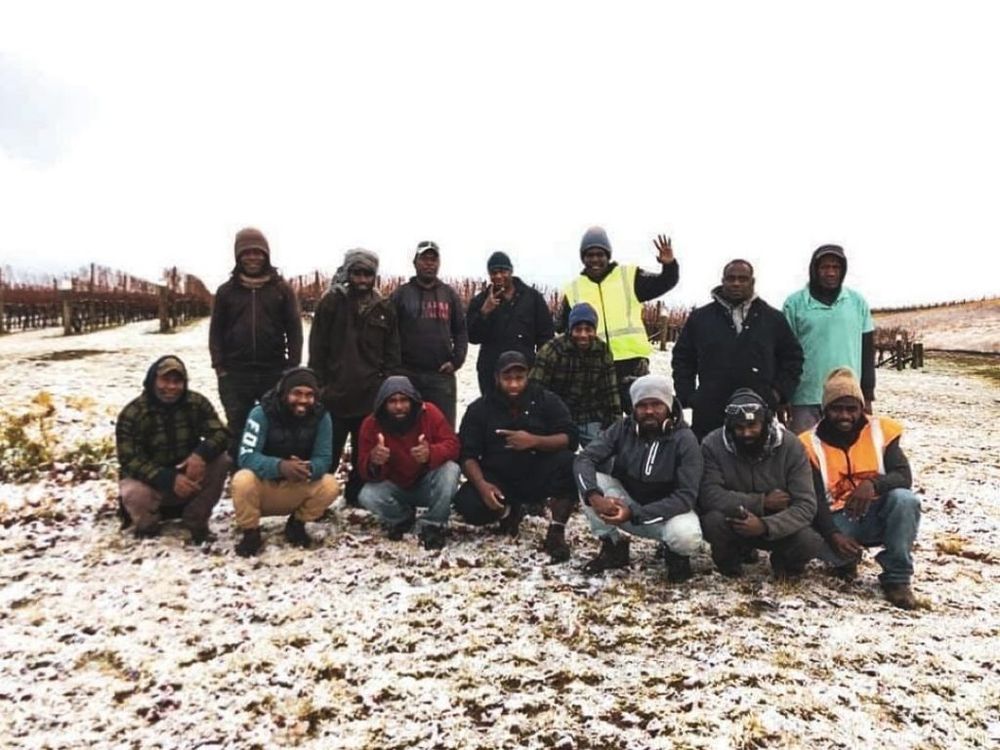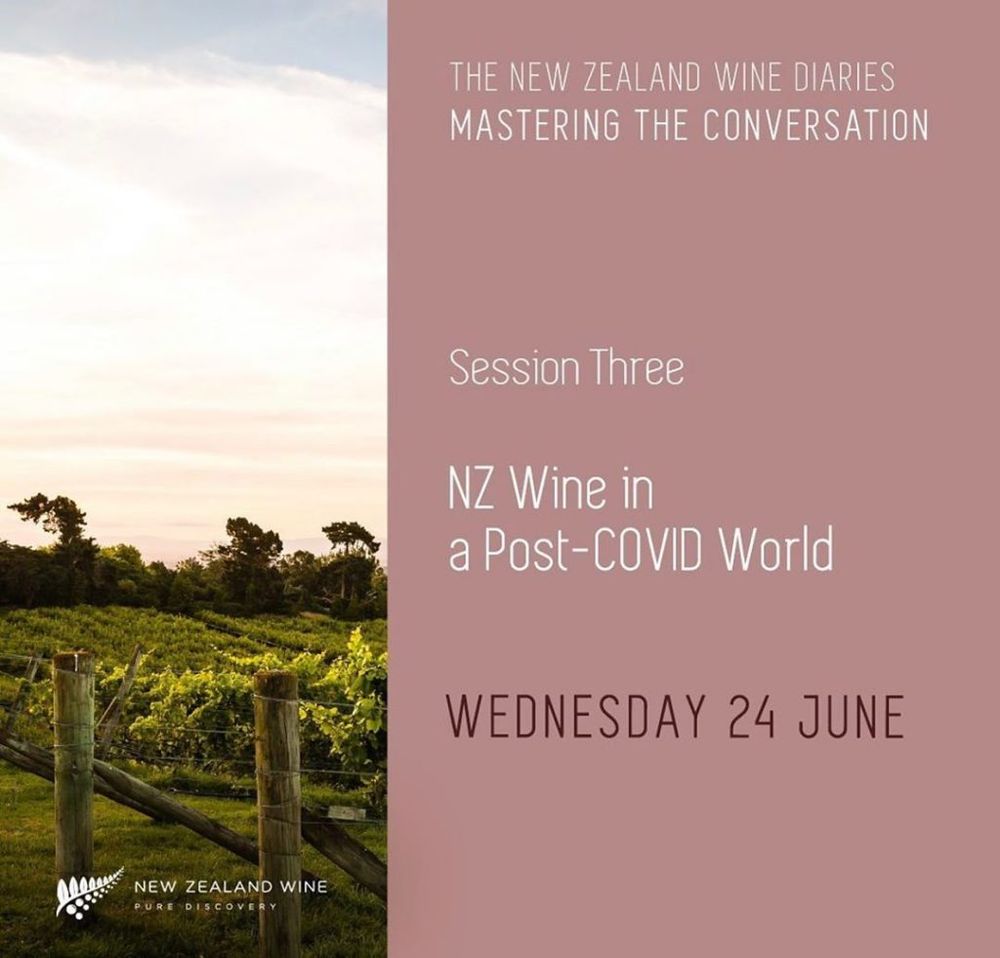Environmental sustainability isn’t the only string to New Zealand’s bow; its ‘fair and equal’ human element is often overlooked.
Again and again during the coronavirus pandemic, New Zealand has been held up as an example of how to tackle Covid-19.
While other countries tried to supress the virus, New Zealand set out to eliminate it.
The country imposed one of the world’s strictest lockdowns on 25 March, which – although it will have caused a deep economic recession – led to the disease being brought under control and New Zealand being declared “virus free” on 8 June, prompting Prime Minister Jacinda Ardern to do “a little dance” to celebrate.
While the country’s borders remain closed, Ardern hoped that eliminating the virus would give the nation a head start on its economic recovery.

Systems will have to be put in place for contract labour on which the New Zealand industry depends. These workers from Vanuatu were some of 1000s stranded when Lockdown began.
That rebound will be of particular importance to the nation’s wine industry; pre-Covid data from New Zealand Winegrowers showed that domestic sales slipped by 8% in February to 48.5 million litres, while exports of packaged wine rose by 3% to 159.4 million litres and bulk wine exports climbed by 10% to 119.8 million litres.
The trade body used the third in its New Zealand Wine Diaries series last night to examine “New Zealand Wine in a Post-Covid World”.
Writer and master of wine Emma Jenkins joined the series’ three regular participants – master sommeliers David Keck, Ronan Sayburn and John Szabo – to explore the trends and themes that could characterise the industry’s future.
Last night’s session built on the previous two webinars, which focused on Sauvignon Blanc and on Chardonnay and Pinot Noir.
The four masters discussed how varieties, sub-regions, and sustainability could all be harnessed as ways to develop the country’s wine industry.

Emma Jenkins MW joined the panel for the first time in the New Zealand Wine Diaries © Emma Jenkins
Variety is the spice of life – or is it?
At the moment, New Zealand is synonymous with Sauvignon Blanc, which accounts for 73% of its total production and 86% of its exports, with Pinot Noir sitting a long way behind at 8% of production and 5% of exports, and Chardonnay at 7% of output and 2% of overseas sales.
While the first Sauvignon Blanc vines were planted in the all-conquering Marlborough region as recently as 1975, Jenkins pointed out that the country’s viticultural history in fact stretches back for 200 years to when the first European settlers began growing grapes.
That focus on Sauvignon Blanc is a strength and not a weakness in Szabo’s eyes.
“No one’s going to roll into Burgundy and ask, ‘What’s next after Pinot Noir?” he said.
“Pinot Noir grows pretty well here, so let’s leave it alone; Sauvignon Blanc grows pretty well in Marlborough, so there’s no need to reinvent the wheel.
“Every industry needs a driver and, for New Zealand, that’s Sauvignon Blanc, and that’s not a negative whatsoever, it’s a positive.”
Szabo praised some of the other aromatic white varieties being grown in parts of New Zealand with Alsace-like cool, dry climates and many hours of sunshine, and singled out Marlborough’s Nautilus Estate Gruner Veltliner, made by the Hill-Smith family that owns Yalumba in Australia and handled in the UK by Fell’s.
Sayburn banged the drum for Syrah – praising its Northern Rhône-like gamey and black pepper notes, which reminded him of Côte-Rôtie – and highlighted both the Elephant Hill Reserve Syrah imported to the UK by Corney & Barrow and the Trinity Hill Homage Syrah from the Gimblett Gravels area in Hawke’s Bay, which Liberty Wines brings into the UK.
The European style of New Zealand’s Syrah sets it apart from Australia’s Shiraz, but means that it requires more explanation from sommeliers, even in the domestic market, said Jenkins.

Street art in Christchurch: the bi-annual wine celebration due to be held in 2020 has been postponed until 2021
Adopting a regional focus
One of the recurring questions from the first webinar in the series centred around whether consumers were ready to explore regionality within Marlborough’s Sauvignon Blanc.
Jenkins pointed to the work being conducted throughout the country by farmers and winemakers to identify the right clones for the right sites, and to create sub-regional or even single vineyard wines within the wider Marlborough, Central Otago and Hawke’s Bay regions.
The discussion around that level of innovation led Keck to praise the Millton Te Arai Chenin Blanc, which is imported into the UK by Bibendum.
Keck described Chenin Blanc as “somm catnip” thanks to its “chameleon” nature, taking on different flavours depending on whether it was made and aged in stainless steel or varying sizes of oak.
Innovation was also behind Szabo’s choice; the Valli Waitaki Vineyard Pinot Noir, part of New Generation Wines’ portfolio in the UK.
While Valli is a quintessential Central Otago producer, it has ventured into the smaller Waitaki region for a Pinot that sits alongside its better-known examples from areas including Bannockburn and Bendigo, with Szabo praising the freshness that all the wines share.
While New Zealand may be a relatively-small wine producer on a global scale – with Sayburn pointing out that its total vineyard complement covers a similar area to France’s Champagne region – Jenkins explained that its diversity comes from its elongated shape.
If New Zealand was placed in Europe then it would stretch from Denmark to the South of France, or from Pennsylvania to Florida in North America, she said.
Its collection of mountain ranges also leads to variations in climates between regions; even though Hawke’s Bay and Martinborough only lie 200 kilometres apart, they have distinct characteristics.

Human as well as environmental sustainability
While the evening’s discussion centred on the high quality of the liquid inside the bottles, Szabo asserted that consumers’ perceptions of New Zealand were equally as important.
All four masters agreed that much of the country’s success on the international stage came from its credentials surrounding environmental sustainability.
Yet Szabo felt New Zealand could go further: “Over the past couple of weeks, we’ve all been exposed to an enormous amount of introspection and thought and discussions with friends, families and colleagues about the ‘human’ aspect of the world, and there’s certainly one in wine as well.”
He said the country could do more to emphasise its high minimum wage for workers and its relatively high number of Māori-owned wineries, alongside its environmental work.
Jenkins agreed that the nation’s “fair and equal” attitude was an important part of its identity, and agreed that the environmental side of sustainability had played a big role in attracting visitors – including wine tourists – to make the journey; a question-mark that hangs above many winemaking regions amid travel bans and quarantines in a post-Covid world.
That focus on sustainability will form the basis for the fourth and final webinar in the current series, “Organic Wine – Not just for Hipsters Anymore”, which will take place on 23 September, when New Zealand-based master of wine Stephen Wong will join the three regular panellists.
For more details about the final wine diaries webinar, click here









































